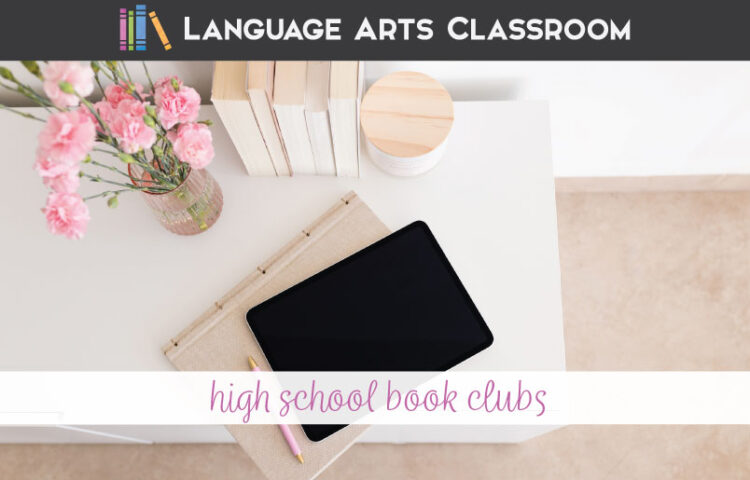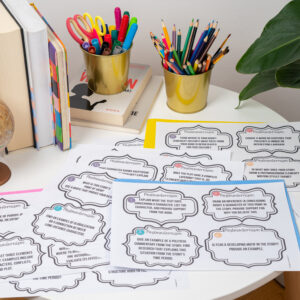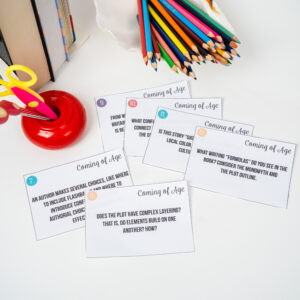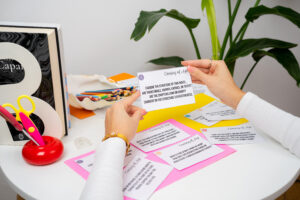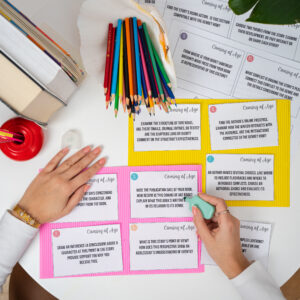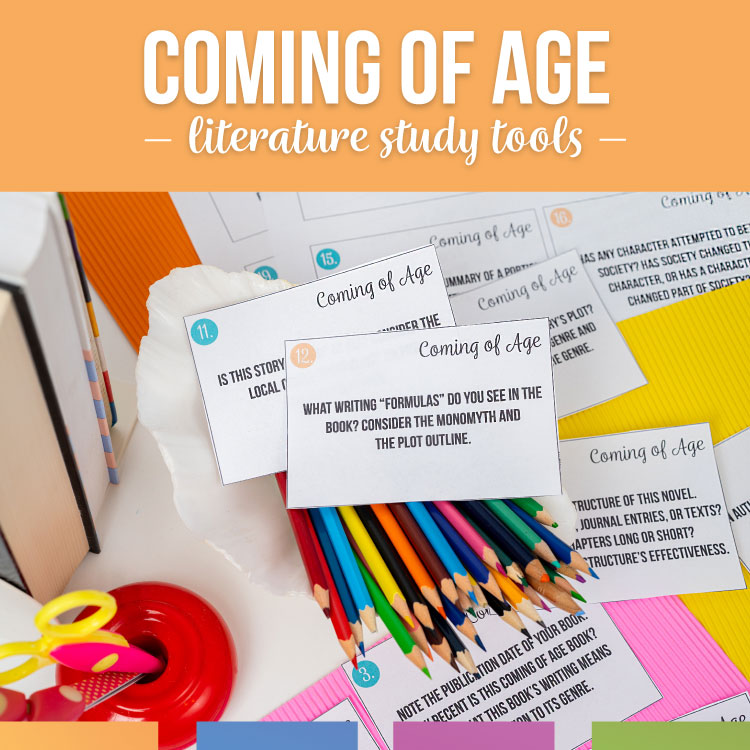Wondering about running book clubs in high school, perhaps books clubs and literature circles? I share my honest thoughts below.
As a high school English teacher, it can often feel like there are an overwhelming number of things to manage in the classroom! But having book clubs as part of your overall English curriculum doesn’t have to add more complication to your day.
Not only is running book clubs a great way for students to get involved with reading and explore different texts, but when done correctly, it offers teachers valuable insight into their readers. What books are popular? Where do critical readers need help? Can they answer questions that meet standards?
With the right strategies in place, you can make running successful and sustainable book clubs within your classes simple. You can also implement various activities to meet high school literature standards.
What are the benefits of running book clubs in high school?
Having a book club in high school offers numerous benefits. It promotes reading and critical thinking skills, fosters a sense of community and friendship among members, encourages open-mindedness and empathy, and provides an opportunity for growth.
Read on for how I implement book clubs in my classroom, and how I overcame some mistakes—so you can avoid them.
What are book clubs in high school?
From discussing the concept with other ELA teachers, yes, book clubs are different from literature circles. Do I think students will care if you exchange the terms? Probably not, and I think that the overarching purpose of both are the same.
So, for the purpose of this post, I will define the two techniques as:
Literature circles: In groups, students read books. They have roles as they discuss the books. Roles might include “fact finder” or “secretary.”
Book clubs: In groups, students read the books. The students complete a variety of activities, but none of the activities rely on students have designated roles.
Across all language arts classrooms, everywhere, I’m sure that these lines are crossed and that pieces and practice mix. When I consider the differences between book clubs and literature circles, those are my ideas for the differences. Again, I think that all ELA teachers can use my ideas from how I use book clubs somewhere in their classrooms!
How can I manage book clubs in high school?
Once you decide on an organizational structure for reading and the book club activities, managing the clubs is practical. You’ll see yourself as a facilitator with your readers.
To organize your book club discussions, readings, and other activities, you’ll set these up just like any other activity in your class.
Hopefully, my post below gives you ideas, no matter if you utilize book clubs or literature circles.
Purpose of book clubs.
The overarching goal for me with book clubs in high school students is to prepare them as life-long readers and learners. To do that, students must take ownership, have an investment in what they read. My literature circles, therefore, are run very similar to book clubs. Students can then choose their book and interact with peers.
I share with classes that I want them to read in their own lives. They should read for enjoyment, and that reading might take place with a group of friends.
With book clubs, readers can complete a variety of literature activities which helps us to meet those tough literature standards for older grades. Often, I readers in a class complete the same activity—just with their own books. Through discussions, students discover that their books have similar pieces. These activities allow everyone to see more than their own books. In that way, they are learning about more books, hopefully encouraged to read more.
Don’t shy away from explaining your purpose with older students. Previously, I ran book clubs without much direct instruction at the beginning. Explaining to students the purpose behind this method helped to spur classroom discussions.
Planning book clubs.
At the start of the semester or school year, map out 4-5 genres to explore with students. Provide a variety of genres, and be sure that you have access to sufficient books for the circles. For instance, my first genre is the memoir. Depending on the size of a class and length of a book, you can run a book club in 3-4 weeks.
Typically, I group books by genre or theme, but you can do both.
Next, choose the books for the club. Consider what students will enjoy, consider what books will be appropriate, and consider diversity. Unfortunately, you need to consider what books you can access.
For my memoir book club, we often read The Glass Castle, The Color of Water, and I Know Why the Caged Bird Sings. One time I provided too many choices, and we lost part of the spirit of collaboration. Students read, but we lacked robust conversations.
Activities with book clubs.
You can develop an assortment of activities for book clubs in high school. I have given readers essay questions where they wrote a final paper from one. Another time, I gave students questions specific to their boo.
What is most successful for me is when students have the same questions or activities no matter the book. That method allows us to discuss genres, and students hear about more than simply their own book. With the books that students read during a round of books clubs, all of the books are of the same genre. Therefore, many of our activities center around genres.
I present a variety of genres to students, and we discuss the nuances of genres. For instance, dystopian and speculative fiction overlap, and some would say that most dystopian literature has a fantasy quality, maybe even a bit of mystery. I walk students through an example—any example will work. Type into a search engine, “genre + (book title)” and you’ll see a variety of answers. Another example is “coming of age” novels. Many bildungsroman books could be romance novels like The Fault In Our Stars, and other coming of age novels could contain a psychological component. I treat this complexity as a positive because books reflect life and its complexity.
Secondly, my questions for literature circles reflect the type of questions for a book club outside of school. They are general, but the questions guide discussions and allow students the freedom to explore areas of the book they found interesting.
Finally, if possible, show students a variety of books from different genres. Books from a classroom library or a school library work well—bring them up and allow classes to handle them. You can also borrow books from a local library. Often, librarians will come in and do a presentation. If you cannot bring physical books to classes, take screenshots of books and make a collage of different genres. Even better, ask students to explore a genre and create a collage, perhaps using Canva.
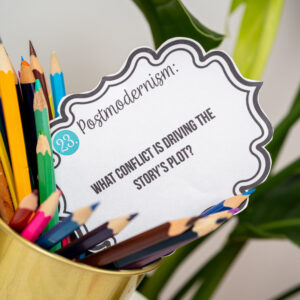
Home connections, newsletters, emails.
At the beginning of the year, I typically share the concept of book clubs in a newsletter home. For years, I have stressed independent reading and benefits of literacy with my students’ adults, and explaining book clubs is just another sentence.
A brief explanation encourages a positive book club experience.
Final ideas for book clubs.
All in all, running book clubs in high school English classes is a great way to keep students engaged with literature. It allows students to have more control and has the potential to create an exciting learning environment in the classroom. The topics of book clubs can also help promote important critical thinking skills that will carry them into their college and beyond.
Choosing your organizational strategy and activities for book clubs in high school English can get you started.

